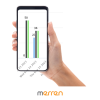Surveys are an important tool to collect insights and capture opinions and feedback from buyers. They can help businesses make informed decisions, understand their customers better, and improve their services or products. However, creating a survey that provides accurate results can be tricky. There are common mistakes that can lead to inaccurate data and unreliable results. In this blog, we will discuss the top 5 survey mistakes to avoid for accurate results. Read on to learn more about how you can create surveys that deliver reliable results.
What are Survey Mistakes?
Survey mistakes are errors that can impact survey accuracy. Low response rate can bring inaccurate results, hamper data collection methods and affect business strategies. They include biased sample groups, unclear language, and leading questions. Not testing the survey beforehand or not offering enough response options are also some common mistakes.
Top 5 Survey Mistakes to Avoid
To ensure accurate results for effective market research or customer satisfaction analysis, avoiding common survey mistakes is essential. Here are some technical issues to avoid if we are looking to improve survey quality and bring a high response rate.
1: Not using survey templates
Streamline your survey design process by using custom made templates for collecting responses. These are a time-saving resource that guarantees consistency and prevents errors related to formatting and wording. Skipping this step may lead to bias or incomplete responses that skew the survey data and weaken market research efforts. Utilizing an easy-to-use platform like Merren, helps with personalization for your target audience on mobile devices and tablets while avoiding long surveys with irrelevant questions.

2: Ignoring translations and accessibility
Your respondents need to comprehend your survey to answer it clearly. It’s important to provide alternative formats like translated audio versions for people with disabilities or language barriers. Additionally, offering multilingual translations for various target audiences is vital for complete data sets. Testing the feedback form with a diverse group makes sure it’s easy to understand and navigate. By addressing these issues you can expect accurate results and offer inclusivity in your customer feedback protocols.
3: Using leading questions
When designing your survey questionnaire, avoid errors like using leading questions that could potentially introduce response bias. It could be a question that could solicit a simple yes or no, more like trying to get the answer you are looking for. Instead strive for neutral wording and accurate phrasing that is free of jargon or technical terms. Ensure that you have reviewed your survey questions thoroughly to eliminate any incorrect language or assumptions.
4: Poor sampling techniques
To obtain accurate survey data, avoid common survey mistakes such as poor sampling techniques. Sampling plays a main role in determining the accuracy of survey results. Ensure that your sample adequately represents the target population by avoiding biased sampling methods. This includes convenience sampling or relying only on volunteers. Consulting with a professional market research firm can help you in creating an appropriate sampling plan for unbiased and accurate results. Choose a sampling method that truly represents who your target buyers are and what they really think about your brand.
5: Relying only on traditional methods
If you are looking to capture feedback from a diverse range of audience, you have to look away from traditional methods of seeking feedback. Accurate results also depend on distribution channels. It’s essential to assure that the survey design is user-friendly and compatible across mobile devices, tablets and reachable to a large number of respondents. Use mediums that are frequently used by people such as messenger based channels of Whatsapp surveys and Facebook messenger feedback methods. We also have a guide on how to choose the right survey channels here.
How to Avoid Survey Mistakes?
Start by defining your objectives and target audience and then design your survey accordingly. Here are some important pointers that can help you streamline your survey design. Gain a higher response rate and bring accurate and authentic data for analysis.
Use re-tested questions
Pre-tested questions are designed to save time and resources as they have been shown to be effective in previous surveys. By tailoring them to the specific audience being surveyed it increases the accuracy and reliability of the gathered data. Pretested questions avoid every survey mistake and question biases. Merren offers an array of templates you can use. Additionally, you can also create custom made questions and deploy them on relevant channels.

Focus on the survey objective
Before even starting to design your feedback questionnaire, develop and map a clear goal of what you plan to achieve via this survey. The questions included in your questionnaire should always be tailored towards your specific objective. Pilot testing the questionnaire with a small group can help identify any issues before sending it out to a larger audience providing valuable feedback for future improvements.
Include diversity in sampling
To achieve sampling diversity, use stratified sampling techniques and pre-test your survey before launching it to identify biased errors or other issues. With diverse respondents participating in your feedback protocol, you can get valuable insights from a range of backgrounds and avoid coverage error.
Use simple language (avoid jargons)
A simple language uses jargon-free words, avoids abbreviations and complex vocabulary. Any survey will bring a high response if respondents understand the question. Since the survey goes out to a large number of people, everyone’s ability to comprehend will be different. By following these guidelines, you will be able to gather valuable feedback that can inform your market research or customer satisfaction efforts.
Important Mistakes That Can Prevent Accurate Results
Here are some important notes to consider if we want to design a curated high response feedback form for our respondents.
Not Considering the Respondent’s Perspective
Respondents have different cultural habits and barriers. Even when seeking to close the feedback loop, they could have a certain explanation for the problems. Keeping an open-ended question allows them to express their concerns. This goes beyond numerical feedback that may not explain the entire picture. The order of presentation significantly affects how respondents perceive and answer subsequent questions. Avoiding leading questions that may influence responses is essential for accurate data analysis.
Using Double-Barreled Questions
Double-barreled questions in a feedback form can create confusion and lead to inaccurate responses. To avoid such survey errors, complex questions should be broken down into multiple separate, clear questions. Double-barreled questions may also result in response bias, as respondents might only be able to agree/disagree with one part of the question.
Ambiguous or Vague Questions
One of the most common errors is ambiguity in the question wording. With this , you will not obtain a clear cut answer or perhaps a skewed response. To ensure clarity, questions must be specific and focused on one topic at a time. Use a clear and concise language without any technical terms or jargon to avoid cognitive load on respondents. Additionally, pilot testing the questionnaire with a small group of respondents can be a good idea. Using smaller results to analyze, you can refine your marketing efforts for bigger campaigns.
Loaded or Leading Questions
Using loaded or leading questions is one of the most common survey mistakes. The use of biased language and assumptions can lead to inaccurate results due to response bias. To avoid this error, consider the purpose of the survey and ask the right question at the right time. Neutral language should be used with clear answer options for valuable feedback.
Conclusion
To ensure accurate results for online surveys, it is imperative to avoid common survey mistakes. These include not using custom designed templates, ignoring accessibility, using leading questions, poor sampling techniques, and relying only on traditional methods. To avoid these errors, use pre-tested questions, focus on the research objective, include diversity in sampling, keep it simple and clear with simple language . Additionally, be mindful of the questionnaire design by considering the respondent’s perspective and avoiding double-barreled questions, ambiguous or vague questions. By following these best practices, you can improve the accuracy of your surveys and make better-informed decisions for your business or organization.
Want to know how Merren can give you accurate results? Sign up for our 14 day free trial here. You can also check our AI Survey Builder that will give you error free questions, ready to launch.





